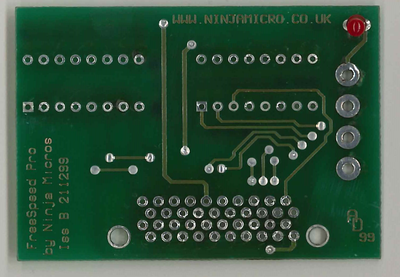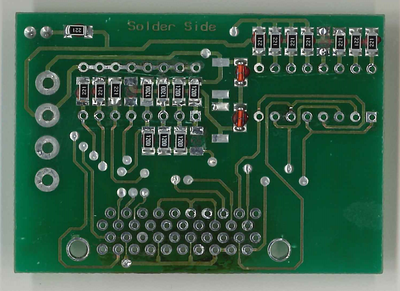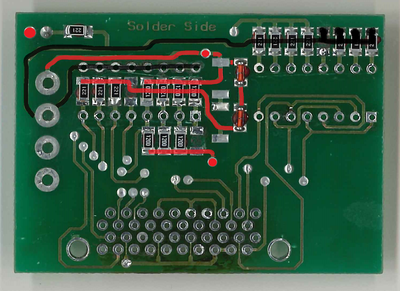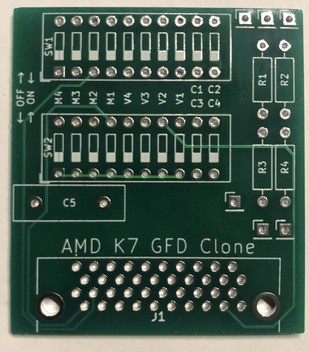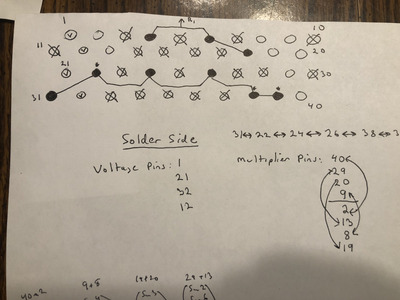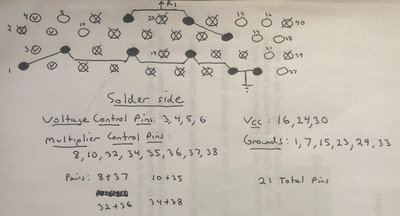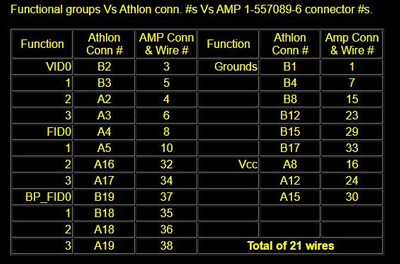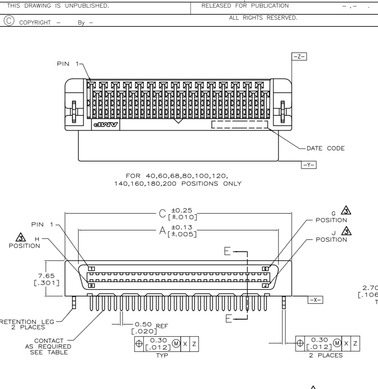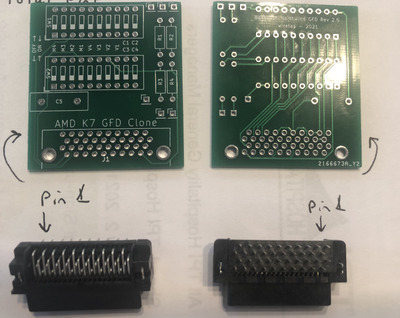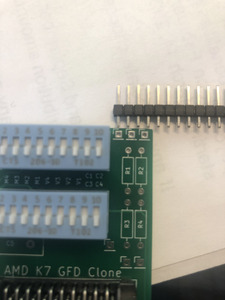Here is what I have found out and what I think is going on.
I drew a hand diagram but realized I labeled the pins based on looking at the back of the connector (the solder side). On the golden fingers connector there are 4 pins that control voltage - 16 possible states or voltages. There are actually 8 pins that control the multiplier but they are redundant and duplicated. Meaning each pair of pins should both be set to the same state (high or low). That's why the Northwind device only has 4 switches for a multiplier and the sets of pins are tied together with the traces on the connector. My Ninja device is an older style and uses all the pins separately resulting in needing many more DIP switches but I verified looking through the tables I have that those same pairs or switches and pins are always pulled in the same way (i.e., one is high and so is the other and vice versa).
I think the problem is the DIP switch is sometimes left floating. The very top DIP (SW1) when the switches are in the up position are pulling high through the 2K resistor and the associated power pins on the connector. When the SW1 is down this is obliviously disconnected. However the bottom DIP (SW2) should then be pulling the pins to ground but the problem is the bottom row of pins on the bottom DIP aren't connected to anything. The only one that has a connection is M3. M3 leads to several pins on the connector all tied together.
I think jumpering or soldering (when looking at the back of the device) the 8 bottom rightmost DIP switch pins together should get the device working. I can't verify this because as I mentioned previously I can't find the boards I need. I'm guessing maybe these are connected together under the DIP switch on the original and we can't see that in the photos we have. It's also possible there are other pins on the connector that need to be tied together like on my Ninja and are maybe on the Northwind just under the connector and we can't see it, I think this is less likely though.
In the attached picture I have figured out what pins do what. This is based on the Ninja Freespeed device but is mostly applicable to wiretap's PCB.
The pins are numbered when looking at the solder side. Pins marked with a 'V' are the ones that control the voltage states. Ones with a 'X' are unused. The empty circles are the multiplier pins, again 8 of them but (using my labeling) 40/2 , 29/13 , 20/19, and 9/8 are redundant. They can be tied together so that you only need 4 DIP switches. I have no idea what would happen for example if you pulled pin 40 high and pin 2 low.
The top 3 dark circles are connected to together and go to the 2K ohm resistor. The bottom dark circles are interesting. On the Ninja all of these are connected together and do not go to any where else on the PCB. The Ninja has a power connector so everything is pulled to ground through the power connector pins. The three with an '*' above them are not connected to anything on wiretap's prototype but are tied together on Ninja. These are the pins that go to M3 on wiretap's board and I think should go to the other bottom DIP pins.
Thoughts anyone?
Edit, I'm tired and may not be explaining myself well. I am proposing the green line in the second photo attached to this.
